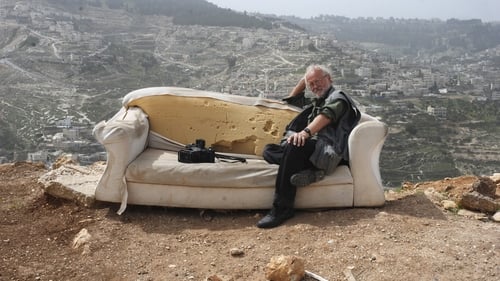
Director of Photography
How to cope with a horrific event? In Still Static, filmmaker and visual artist Adam Kaplan presents two people who have experienced something ghastly. One is a cameraman who says he was “at the wrong place at the wrong time.” He was filming at a gathering, probably a party, when suddenly something happened that caused all hell to break loose. The cameraman describes in detail the human misery he witnessed. The images, flashes and visions were burnt into his retina, and the impact on his life has been huge. He has become someone else, and has never left home since.

Director
The Disappeared follows the story of an action-feature film produced by the Israeli Army in 2000 and then censored just a few weeks before its release. Titled Hane’elam (The Disappeared) in Hebrew, the original film was intended to address a contentious subject in Israeli society and one of the military’s absolute taboos – the rising number of soldier suicides. The ambitious production was of a scope rarely seen in the local film industry at the time and included hundreds of soldier-extras, an entire armored brigade, military helicopters, and special operations personnel. With a lavish budget and a cast of leading Israeli actors, shooting commenced in multiple locations around the country, among them also a top-secret missile base. Soon after editing began and preparations for its commercial, nation-wide distribution were underway, The Disappeared disappeared.

Producer
Czech Photographer Josef Koudelka grew up behind the Iron Curtain and always wanted to know "what was on the other side". Forty years after capturing the iconic images of the Soviet invasion of Prague in 1968, the legendary Magnum photographer arrives in Israel and Palestine. On first seeing the nine-meter-high wall built by Israel in the West Bank, Koudelka is deeply shaken and embarks on a four-year project in the region which will confront him once again with the harsh reality of violence and conflict. Director Gilad Baram, Koudelka's assistant at the time, follows him on his journey through the Holy Land from one enigmatic and visually spectacular location to another.

Director of Photography
Czech Photographer Josef Koudelka grew up behind the Iron Curtain and always wanted to know "what was on the other side". Forty years after capturing the iconic images of the Soviet invasion of Prague in 1968, the legendary Magnum photographer arrives in Israel and Palestine. On first seeing the nine-meter-high wall built by Israel in the West Bank, Koudelka is deeply shaken and embarks on a four-year project in the region which will confront him once again with the harsh reality of violence and conflict. Director Gilad Baram, Koudelka's assistant at the time, follows him on his journey through the Holy Land from one enigmatic and visually spectacular location to another.

Writer
Czech Photographer Josef Koudelka grew up behind the Iron Curtain and always wanted to know "what was on the other side". Forty years after capturing the iconic images of the Soviet invasion of Prague in 1968, the legendary Magnum photographer arrives in Israel and Palestine. On first seeing the nine-meter-high wall built by Israel in the West Bank, Koudelka is deeply shaken and embarks on a four-year project in the region which will confront him once again with the harsh reality of violence and conflict. Director Gilad Baram, Koudelka's assistant at the time, follows him on his journey through the Holy Land from one enigmatic and visually spectacular location to another.

Director
Czech Photographer Josef Koudelka grew up behind the Iron Curtain and always wanted to know "what was on the other side". Forty years after capturing the iconic images of the Soviet invasion of Prague in 1968, the legendary Magnum photographer arrives in Israel and Palestine. On first seeing the nine-meter-high wall built by Israel in the West Bank, Koudelka is deeply shaken and embarks on a four-year project in the region which will confront him once again with the harsh reality of violence and conflict. Director Gilad Baram, Koudelka's assistant at the time, follows him on his journey through the Holy Land from one enigmatic and visually spectacular location to another.





